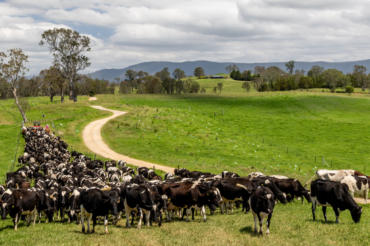
The blackboard says it all. Why would I travel halfway across London to buy an egg? As the Borough Market’s chalk-written message explains, because it tastes better. And that’s because the hens that lay the eggs are free-roaming, fed on a natural diet of grasses, clover and maize, are humanely treated and are probably as happy about their environment as chooks can be. At the same time as I make this purchase, I accept that I’m paying a premium for an egg that may be smaller or larger and thinner shelled than eggs from the supermarket, which dictates a standardised size and condition of the eggs it sells.
Farmers markets may appear to be a phenomenon of recent times, but there have been traders selling grain, fish, vegetables and livestock on London Bridge since the 11th century. In the 13th century, traders were relocated to what is now Borough High Street. In 1755 the market was closed by parliament, but a group of local residents raised £6000 to buy a patch of land known as the Triangle, once the churchyard of St Margaret’s, and reopened the market. The Triangle is still at the heart of the market today, where stallholders number more than 130 and dedicated foodies flock from all over London to buy direct from the growers and producers who are as serious about supplying top quality as their customers are about sourcing it.
These days, it seems there’s a growers or farmers market in every suburb and country town. While the tradition of farmers selling their produce in the town square began long before the Industrial Revolution made transporting produce a simple matter of putting it on a truck or plane and delivering all over the world overnight, the values of the market have particular appeal in the modern world. The ideals of the farmers market are to connect the consumer to the grower, to ensure fair prices for the grower by selling directly and to enable the customers to buy fresh, nutritious local produce that hasn’t been transported hundreds of miles or stored for unknown periods of time.
The markets also build community, a much-needed commodity in the anonymity of the suburbs. Little wonder, then, that the Australian Farmers Markets Association website lists more than 150 markets across the country while in the US, where the revival began, farmers markets have trebled to more than 6000 in the past decade.
This story was originally published in Australian Country issue 15.3. Click here to subscribe to the magazine.
For more farm life stories, click here.
Words Kirsty McKenzie
Photography Ken Brass














